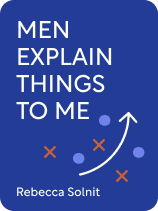
Why are women attacked in online communities? What levels of violence do these threats reach?
Rebecca Solnit explains that language can be used destructively against women. This is well illustrated by the way sexism and misogyny manifest in online communities and on social media.
Find out more about the phenomenon of online violence against women.
The Threats Women Face Online
Women in online communities—such as gaming communities—frequently face threats and harassment from men. According to Solnit, online violence against women is particularly common when they share opinions that men disagree with. The threats these women receive are a message that their voices are unwelcome, that there’s no space for them, and that their role is subordinate to men.
(Shortform note: Online communities can be hostile to men as well, as people of all genders report experiencing online harassment. Research shows that more men report harassment in the form of physical threats, while more women report sexual harassment. Additionally, trans people and gender-nonconforming people are more likely than their cis peers to be harassed online.)
For example, when feminist media critic Anita Sarkeesian called out such behavior in these communities, people bombarded her with threats and hacking attempts. One man even made a video game that allowed players to punch an image of Sarkeesian’s face until it became bruised and bloodied.
Online threats are frightening and genuinely dangerous, explains Solnit, because threats are often the precursor to physical acts of violence. Still, law enforcement and social media sites tend to ignore these threats—which are often made under the guise of “free speech,” though they’re really thinly veiled instances of hate speech.
(Shortform note: In America, the First Amendment to the Constitution guarantees the right to freedom of speech, an integral part of basic rights. Hate speech is generally protected under the First Amendment, but there are exceptions to this, such as obscenity, defamation, and threats. However, the First Amendment only prohibits the government from regulating speech, whereas social media sites are private companies that can implement their own rules restricting hate speech if they choose to do so. Some argue that social media sites should do this not only for the common good, but also because it’s a practical business decision—by regulating their content, sites can enhance user trust and avoid the need for government regulation.)
| Gamergate: A Misogynist Movement in the Gaming Community Anita Sarkeesian’s harassment was not a one-off event, but rather part of a larger misogynist movement in the gaming community. This movement, known as Gamergate, was supposedly a response to unethical practices in gaming journalism: Independent game designer Zoe Quinn released a free game in 2013 called Depression Quest that defied many traditional gaming norms. The following year, Quinn’s ex-boyfriend published a blog post in which he alleged that Quinn cheated on him with some professionals in the gaming industry. This led many gamers to argue that Quinn had used sex to further her career and make her game more popular. This incident sparked the larger Gamergate movement. The Gamergate attacks carried out included harassment, explicit threats of violence, and doxxing (the practice of seeking out and revealing someone’s personal information online) so severe that both Quinn and Sarkeesian were forced out of their homes. Further, many attacks were directed at women who weren’t journalists. Rather, they seemed to be a backlash against threats to the traditional gaming media, one in which the typical white male demographic was angry at the increasing inclusion of women and minorities in games and game development. |

———End of Preview———
Like what you just read? Read the rest of the world's best book summary and analysis of Rebecca Solnit's "Men Explain Things to Me" at Shortform.
Here's what you'll find in our full Men Explain Things to Me summary:
- How "mansplaining" comes from a cultural tendency to devalue women
- The attitude of control that motivates the mistreatment of women
- The role that language plays in the advancement of women’s rights






